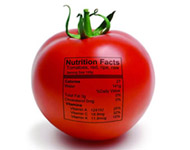Nutrition and Health Sciences, Department of

Department of Nutrition and Health Sciences: Faculty Publications
Document Type
Article
Date of this Version
3-21-2020
Citation
European Journal of Applied Physiology (2020) 120:1155–1164 https://doi.org/10.1007/s00421-020-04354-0
Abstract
Purpose Weight loss can result in the loss of muscle mass and bone mineral density. Resistance exercise is commonly prescribed to attenuate these effects. However, the anabolic endocrine response to resistance exercise during caloric restriction has not been characterized. Methods Participants underwent 3-day conditions of caloric restriction (15 kcal kg FFM−1) with post-exercise carbohydrate (CRC) and with post-exercise protein (CRP), and an energy balance control (40 kcal kg FFM−1) with post-exercise carbohydrate (CON). Serial blood draws were taken following five sets of five repetitions of the barbell back squat exercise on day 3 of each condition. Results In CRC and CRP, respectively, growth hormone peaked at 2.6±0.4 and 2.5±0.9 times the peak concentrations observed during CON. Despite this, insulin-like growth factor-1 concentrations declined 18.3±3.4% in CRC and 27.2±3.8% in CRP, which was greater than the 7.6±3.6% decline in CON, over the subsequent 24 h. Sclerostin increased over the first 2 days of each intervention by 19.2±5.6% in CRC, 21.8±6.2% in CRP and 13.4±5.9% in CON, but following the resistance exercise bout, these increases were attenuated and no longer significant. Conclusion During caloric restriction, there is considerable endocrine anabolic resistance to a single bout of resistance exercise which persists in the presence of post-exercise whey protein supplementation. Alternative strategies to restore the sensitivity of insulin-like growth factor-1 to growth hormone need to be explored.
Included in
Human and Clinical Nutrition Commons, Molecular, Genetic, and Biochemical Nutrition Commons, Other Nutrition Commons


Comments
OPEN ACCESS CC-BY